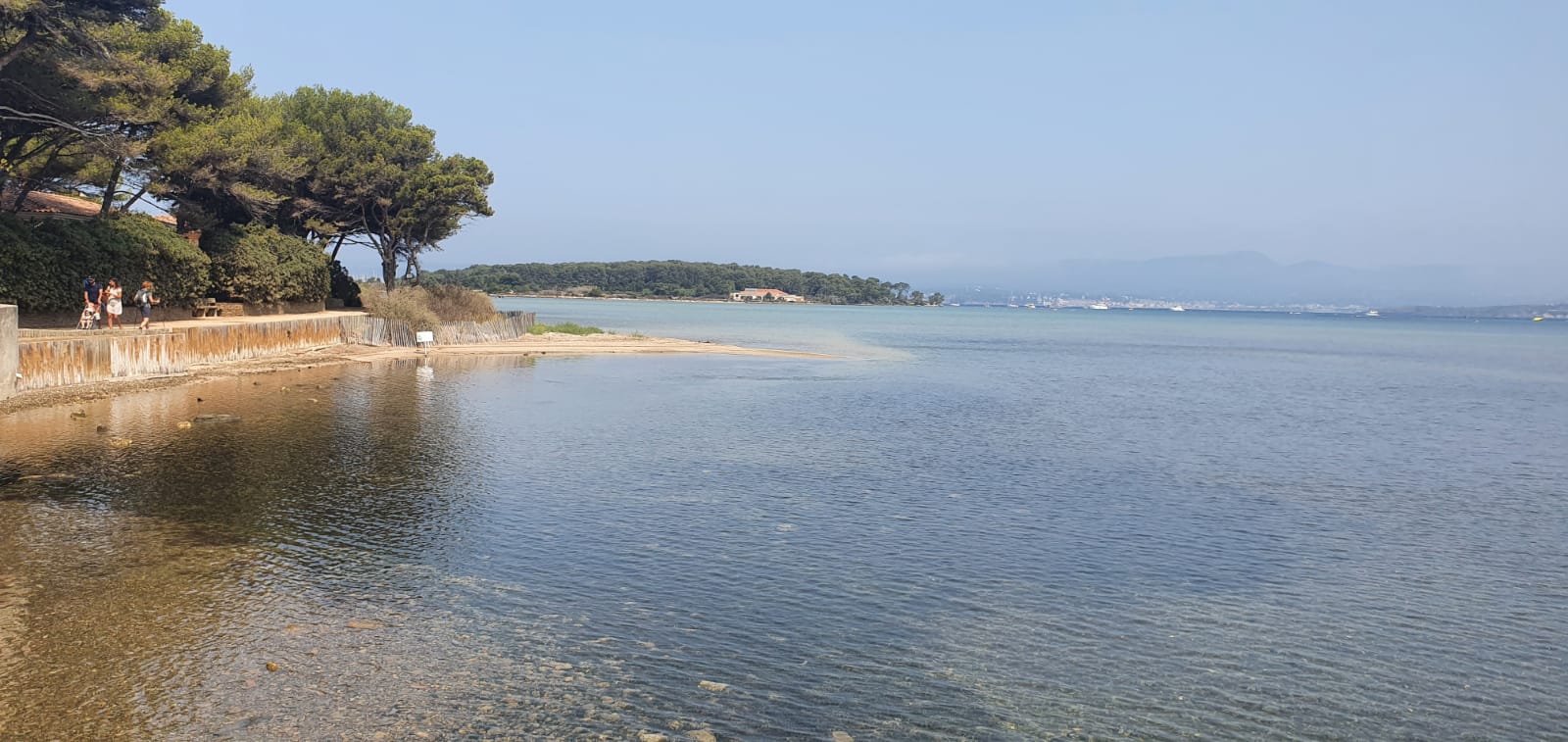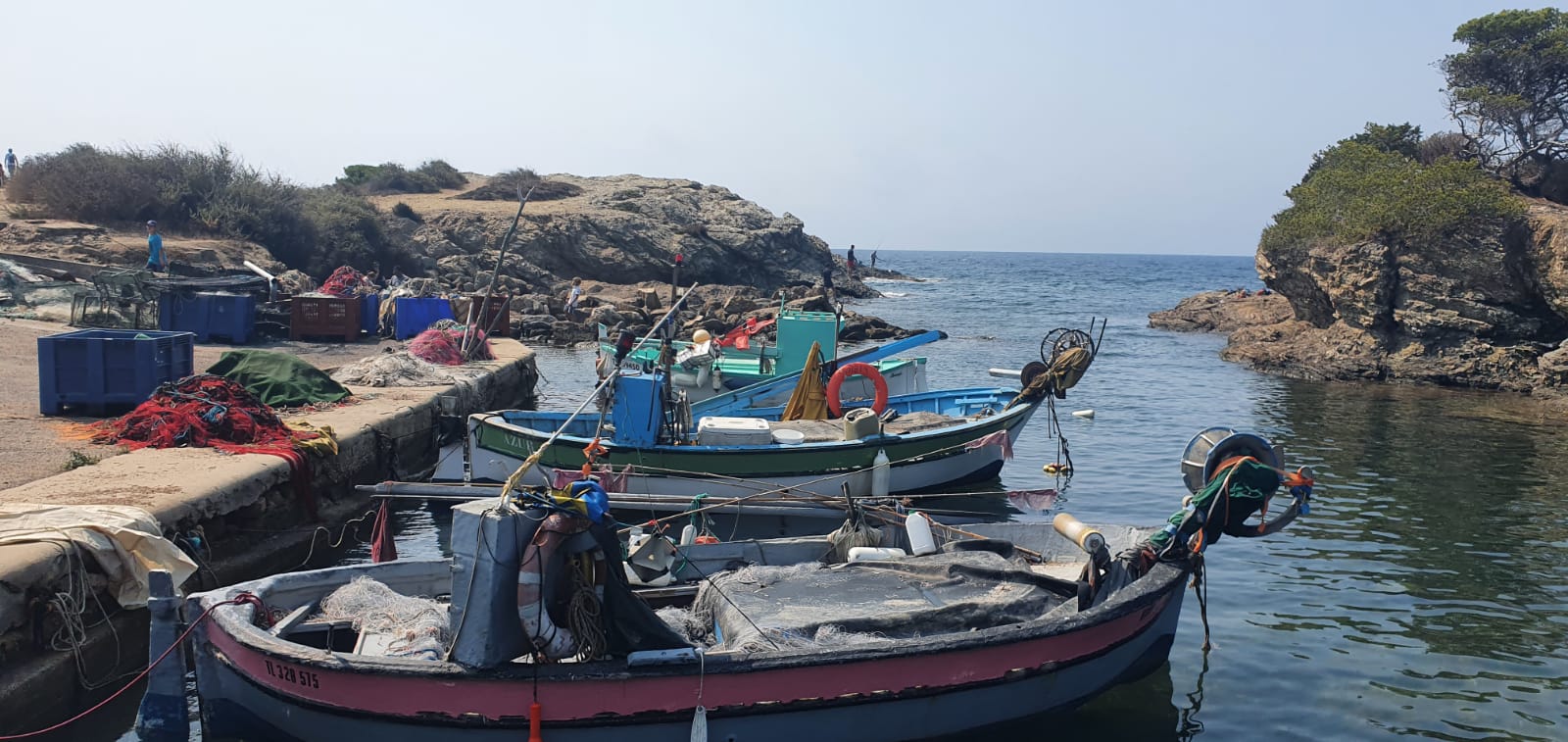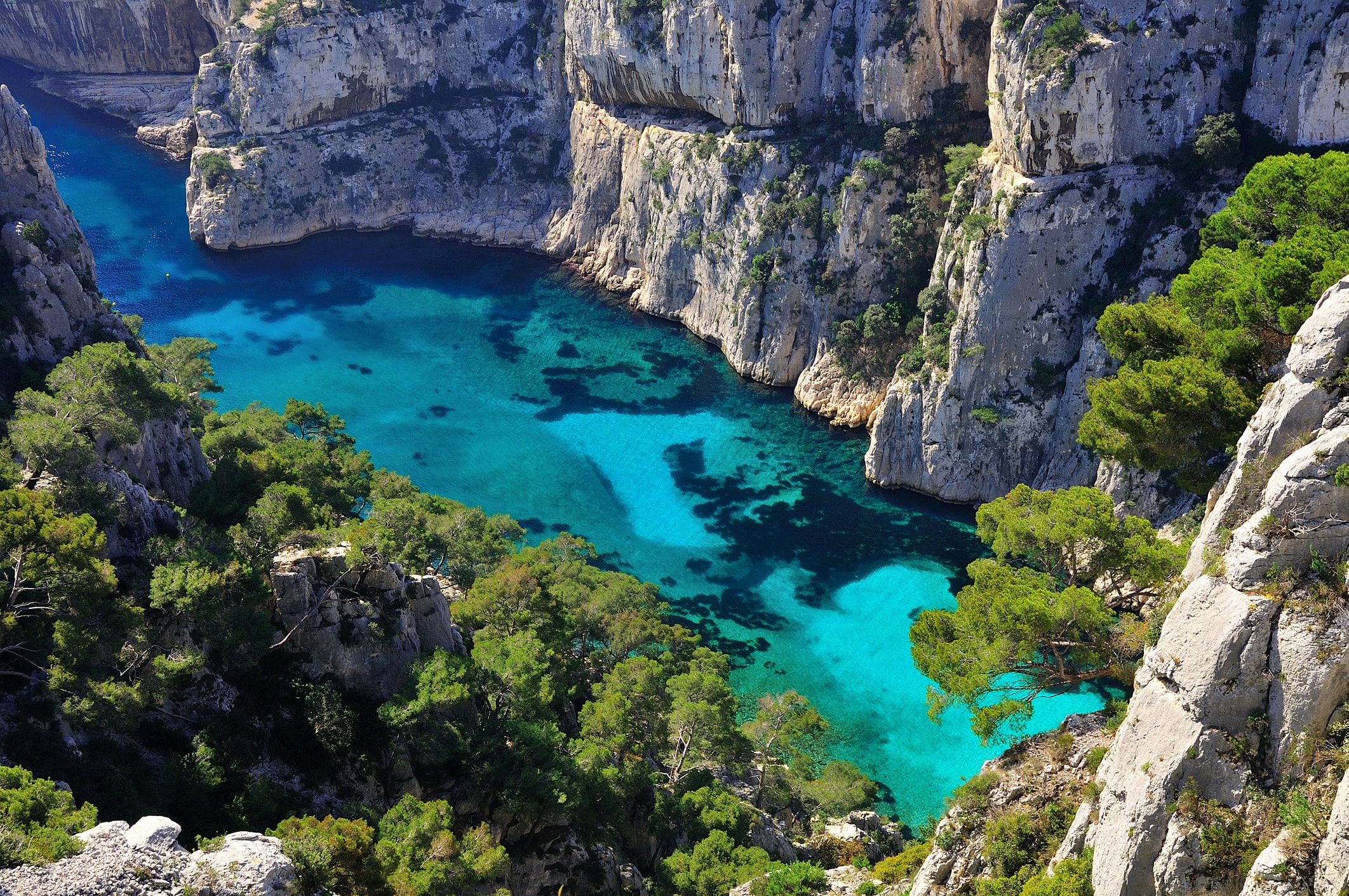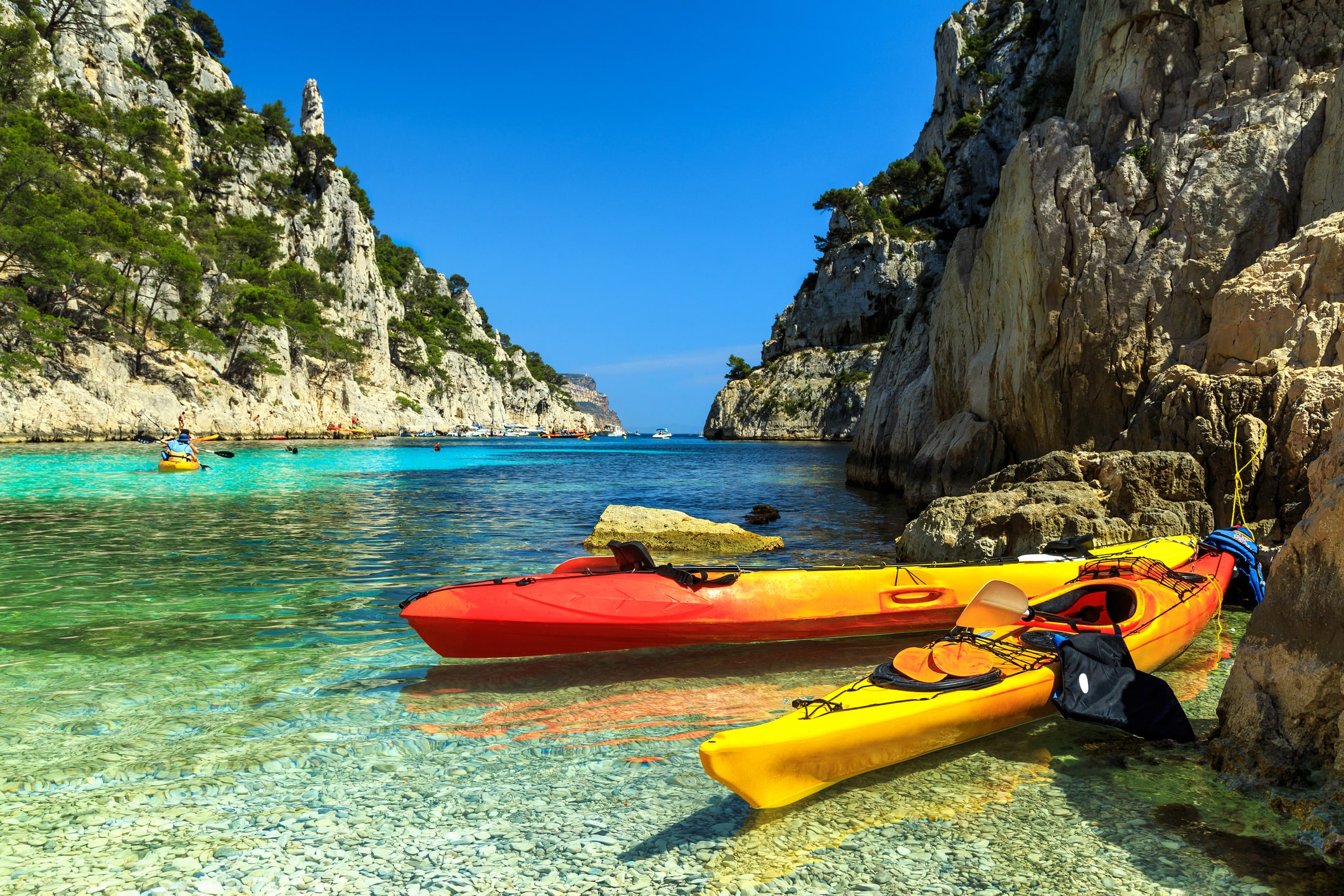French Riviera,
the Paradise Hides Behind the Cliff!
Known for its beaches and its awesome villas, the French Riviera (South of France) offers many hiking possibilities all year round like in the Calanques National Park (Bouches-du-Rhône) or on Grand Gaou Island, Six-Fours-les-Plages (Var).
The French Riviera, in the South of France, is well known for its beaches (often crowded in summer like in Nice), its spring and summer festivals (Aix-en-Provence Festival, Jazz à Juan, Cannes Film Festival…), and its awe-inspiring villas (not for rent on Airbnb!) hosting extravagant parties (not tagged as public events on Facebook!). La Côte d’Azur, as it is called in French, has a lot to offer to enthusiastic hikers and swimmers looking for a turquoise blue sea. “Yes, [guys], there are things to see and do on the French Riviera without spending money”, noted the writer Robert A. Heinlein. Get into your swimming suits, put your hiking shoes on, and follow us!

Six-Fours-les-Plages, on the French Riviera.
A Trek to Gaou Island
A seaside town located about 40 km southwest of Toulon (Var, Provence-Alpes-Côte d’Azur), Six-Fours-les-Plages offers several options for hiking, specifically a trek path that stretches out from the port of Coudoulière [in French] to Gaou Island via a coastal path passing through several beaches. Once you have reached the Le Brusc cornice, walk along a lagoon with calm, shallow, and translucent waters that extend all the way to Gaou Island.
This easily accessible far side of the world metamorphoses according to the light. Like this Sunday, August 22, around noon, it can take on lunar aspects when the fog clings to the calm and translucent waters of the lagoon. That one-meter deep expanse of water is a place where thrives the Posidonia oceanica (commonly known as Neptune grass), a protected endemic species. Closed to navigation and swimming, that protected area, called the nursery, offers shelter for fish against predators. “For several decades it has suffered in various places, a retreat and an atrophy caused by human activity,” warns Frederic Elie [in French], a scientist

(Six-Fours-les-Plages, Var).
A bridge between the Mediterranean Sea and the lagoon

The Paradise Is Behind the Cliff!
Approximately 40 km from Gaou Island, located between Marseille and La Ciotat, stands Cassis, one of the three towns that host the Calanques National Park. Created in 2012, it is part of the 11 French national parks [in French] and extends over 43,500 ha (43,500 ha for its marine heart). It is home to 140 protected animal and plant species (including Bonelli’s eagles) and 60 marine species (loggerhead sea turtle, common bottle-nosed dolphin).
It is possible to cross the Calanques* and to discover its numerous wonders in two days, for example from Marseille (Callelongue) to Cassis following this route.
Well-marked and practicable paths, accessible all year round, including the GR 51-98, may be followed in two stages (the first and second stage). Hike along the coast, up the cliffs, then dive towards the creeks, where a swim in the crystal-clear turquoise water is a must, to snorkel, refresh, and rest. Remember to bring drinking water supplies for the day, which are not available on the route.
The Calanques National Park, which shelters the highest coastal cliffs in Europe (Cap Canaille), is also the playground of many climbing enthusiasts. Experienced adepts, such as the world champion Lionel Franc, train there for the extreme practice of high-flying divingC

"The sight of these landscapes will heal your soul"
At the end of the second stage, before reaching Port Miou and Cassis, the creeks of Port Pin and En-Vau compete in beauty with that of Sormiou and its beach discovered on the first day.
If you are ready to spend a little money, despite Robert A. Heinlein’adage, you can discover the creeks and the cliffs from the sea by kayak – either independently by renting a boat at Port Miou or with a guide. Along the way, it is possible to explore underwater caves (such as the blue cave, Porte de Rome…), or even rest on the creeks. Note that a walk accompanied by a guide allows you to visit several caves like the Hermit’s Cave, Saint-Michel-d’Eau douce, and the Bear Cave.
The whole future of art is in the South of France. If you have a creative mind, this is the only place to go on vacation, as the pace of life will allow you to relax completely and the sight of these landscapes will heal your soul and inspire your work.
* Check with the Calanques National Park, which may close access in case of fire risk. A booking system is under review to limit access to 400-600 people a day. At peak hours during summer school, the beaches which are located near a parking lot can be crowded. In the last week of August, there were few people on the path.

How useful was this post?
Click on a star to rate it!
Average rating 5 / 5. Vote count: 10
No votes so far! Be the first to rate this post.


